CHAUVIN ARNOUX PA31ER Manuel utilisateur
- Taper
- Manuel utilisateur

Adaptateur secteur pour Qualistar
Qualistar mains adapter
Qualistar-Netzteil
Adattatore di rete per Qualistar
Adaptador de CA para Qualistar
PA31ER
FR - Notice de fonctionnement
GB - User’s manual
DE - Bedienungsanleitung
IT - Manuale d’uso
ES - Manual de instrucciones
Phase Power Adapter for use with PowerPad
®
Models 8333 & 8336
(Cat. #2140.77)

2
ATTENTION, risque de DANGER ! L’opérateur doit consulter la présente notice à chaque fois
que ce symbole de danger est rencontré.
Appareil protégé par une isolation double.
Polarité du connecteur. Utilisation en intérieur.
Le produit est déclaré recyclable suite à une analyse du cycle de vie conformément à la norme
ISO14040.
Chauvin Arnoux a étudié cet appareil dans le cadre d’une démarche globale d’Eco-Conception.
l’environnement. Le produit répond plus précisément à des objectifs de recyclage et de
valorisation supérieurs à ceux de la réglementation.
Le marquage CE indique la conformité aux directives européennes DBT et CEM.
sélective conformément à la directive DEEE 2002/96/EC : ce matériel ne doit pas être traité
comme un déchet ménager.
Vous venez d’acquérir un adaptateur secteur pour Qualistar+ PA31ER et nous vous remercions de
Pour obtenir le meilleur service de votre appareil :
lisez attentivement cette notice de fonctionnement,
respectez les précautions d’emploi.
English ....................................................................................................................... 10
Deutsch ...................................................................................................................... 18
Italiano ........................................................................................................................ 26
Español ...................................................................................................................... 34
Dénition des catégories de mesure
La catégorie de mesure IV correspond aux mesurages réalisés à la source de l’installation basse
tension.
Exemple : arrivée d’énergie, compteurs et dispositifs de protection.
La catégorie de mesure III correspond aux mesurages réalisés dans l’installation du bâtiment.
La catégorie de mesure II correspond aux mesurages réalisés sur les circuits directement branchés
à l’installation basse tension.
Exemple : alimentation d’appareils électrodomestiques et d’outillage portable.

3
PRÉCAUTIONS D’EMPLOI
Le non-respect des consignes de sécurité peut entraîner un risque de choc électrique, de feu, d’explosion,
de destruction de l’appareil et des installations.
Respectez la tension et l’intensité maximales assignées ainsi que la catégorie de mesure.
Respectez les conditions d’utilisation, à savoir la température, l’humidité, l’altitude, le degré de
pollution et le lieu d’utilisation.
l’intégrité du boîtier et des cordons.
compétent et agréé.
SOMMAIRE
1. UTILISATION ................................................................................................................................. 4
2. CARACTÉRISTIQUES TECHNIQUES ........................................................................................6
2.1. Conditions de référence ......................................................................................................6
2.2. Caractéristiques électriques ................................................................................................6
...............................................................................7
2.4. Conditions d’environnement ................................................................................................ 7
2.5. Caractéristiques mécaniques .............................................................................................7
2.6. Conformité aux normes internationales ...............................................................................7
2.7. Compatibilité électromagnétique (CEM) ..............................................................................7
3. MAINTENANCE .............................................................................................................................8
............................................................................................................................
4. GARANTIE ....................................................................................................................................9

4
1. UTILISATION
L’adaptateur secteur sert à alimenter l’appareil lorsqu’il est utilisé sur une longue durée et permet ainsi
d’économiser la batterie interne de l’appareil.
A l’aide des cordons fournis, connectez l’adaptateur sur les entrées tension de l’appareil, soit entre
Dans l’exemple ci-dessus, l’adaptateur est branché entre le neutre (N) et la phase (L1).

5
Branchez le connecteur jack sur l’entrée alimentation extérieure de l’appareil.
Branchez ensuite les entrées tension et les entrées courant de l’appareil comme si l’adaptateur
secteur n’était pas présent. Le voyant s’allume pour indiquer la mise sous tension.

6
2. CARACTÉRISTIQUES TECHNIQUES
2.1. CONDITIONS DE RÉFÉRENCE
Grandeur d’inuence Valeurs de référence
Température
Humidité relative 45 à 55 %HR
Champ électrique < 1 V/m
Champ magnétique < 40 A/m
2.2. CARACTÉRISTIQUES ÉLECTRIQUES
2.2.1. CARACTÉRISTIQUES D’ENTRÉE
Plage de fonctionnement en tension : 110 V à 1000 V.
Tolérance à la surcharge : ±10% permanent, ±15% temporaire.
Plage de fonctionnement en fréquence : DC à 440 Hz
max
2.2.2. CARACTÉRISTIQUES DE SORTIE
Grandeur d’inuence Valeurs Tolérance
Puissance de sortie permanente 15 W -
Tension de sortie @15 W 15 V ±4%
Tension de sortie maximale à vide 17 V -
Ripple de la tension de sortie -
Temps maximal de court-circuit Permanent -
Temps de démarrage à 100 V < 10 s
2.2.3. RENDEMENT
.

7
2.3. VARIATIONS DANS LE DOMAINE D’UTILISATION
Grandeur d’inuence Variation maximale
Tension de sortie à vide 1 %
Tension de sortie à charge maximale (15 W) 2 %
Rendement à charge maximale (15 W) 5 %
2.4. CONDITIONS D’ENVIRONNEMENT
Utilisation à l’intérieur.
Altitude : < 2000 m
2.5. CARACTÉRISTIQUES MÉCANIQUES
Cordon 1,50 m terminé par une prise jack.
Masse 510 g environ.
Indice de protection IP
IK 04 selon IEC 50102
Cordons de sécurité droit-droit à reprise arrière de 2 mètres de longueur.
2.6. CONFORMITÉ AUX NORMES INTERNATIONALES
2.7. COMPATIBILITÉ ÉLECTROMAGNÉTIQUE (CEM)

8
3. MAINTENANCE
L’appareil ne comporte aucune pièce susceptible d’être remplacée par un personnel non
formé et non agréé. Toute intervention non agréée ou tout remplacement de pièce par des
équivalences risque de compromettre gravement la sécurité.
3.1. NETTOYAGE
Déconnectez tout branchement de l’appareil.

9
4. GARANTIE
Notre garantie s’exerce, sauf stipulation expresse, pendant douze mois après la date de mise à disposition
du matériel. L’extrait de nos Conditions Générales de Vente est communiqué sur demande.
La garantie ne s’applique pas suite à :
une utilisation inappropriée de l’équipement ou à une utilisation avec un matériel incompatible ;
fabricant ;
dans la notice de fonctionnement ;
des dommages dus à des chocs, chutes ou inondations.

10
WARNING, risk of DANGER! The operator must refer to these instructions whenever this
danger symbol appears.
Equipment protected by double insulation.
Polarity of the connector. Indoor use.
The product is declared recyclable following an analysis of the life cycle in accordance with
standard ISO 14040.
Chauvin Arnoux has adopted an Eco-Design approach in order to design this appliance. Analysis
the environment. In particular this appliance exceeds regulation requirements with respect to
recycling and reuse.
The CE marking indicates conformity with European directives LVD and EMC.
The rubbish bin with a line through it indicates that, in the European Union, the product must
undergo selective disposal in compliance with Directive WEEE 2002/96/EC. This equipment
must not be treated as household waste.
Thank you for purchasing a PA31ER Qualistar+ mains adapter. This accessory is designed to be used
For best results from your instrument:
read these operating instructions carefully,
comply with the precautions for use.
ENGLISH
Denitions of the measurement categories
Measurement category IV corresponds to measurements taken at the source of low-voltage
installations.
Example: power feeders, meters and protection devices.
Measurement category III corresponds to measurements on building installations.
Measurement category II corresponds to measurements taken on circuits directly connected to low-
voltage installations.
Example: power supply to domestic electrical appliances and portable tools.

11
PRECAUTIONS FOR USE
the instrument and of the installations.
Comply with the rated maximum voltage and current and the measurement category.
Observe the conditions of use, namely the temperature, the relative humidity, the altitude, the degree
of pollution, and the place of use.
Do not use the instrument if it is open, damaged, or incorrectly reassembled. Before each use, check
the integrity of the housing and of the leads.
All troubleshooting and metrological checks must be done by competent, accredited personnel.
CONTENTS
1. USE ...............................................................................................................................................12
2. TECHNICAL CHARACTERISTICS ...........................................................................................14
2.1. Reference conditions ......................................................................................................... 14
2.2. Electrical characteristics .................................................................................................... 14
............................................................................................15
2.4. Environmental conditions ..................................................................................................15
2.5. Mechanical characteristics ...............................................................................................15
2.6. Compliance with international standards ...........................................................................15
2.7. Electromagnetic compatibility (CEM) .................................................................................15
3. MAINTENANCE ...........................................................................................................................16
............................................................................................................................16
4. WARRANTY ................................................................................................................................. 17

12
1. USE
The mains adapter is used to power the instrument for long-term applications and thereby economize
the instrument’s internal battery.
Use the leads provided to connect the adapter to the voltage inputs of the instrument, either between
In the example above, the adapter is connected between the neutral (N) and phase L1.

13
Connect the jack connector to the external power supply input of the instrument.
Then connect the voltage inputs and the current inputs of the instrument as if the mains adapter was
not there. The indicator lights to indicate powering up.

14
2. TECHNICAL CHARACTERISTICS
2.1. REFERENCE CONDITIONS
Quantity of inuence Reference values
Temperature
Relative humidity 45 to 55 %HR
< 1 V/m
< 40 A/m
2.2. ELECTRICAL CHARACTERISTICS
2.2.1. INPUT CHARACTERISTICS
Voltage range: 110V to 1000V.
Overload tolerance: ± 10% permanent, ± 15% temporary.
Frequency range: DC to 440Hz
max.
2.2.2. OUTPUT CHARACTERISTICS
Quantity of inuence Values Tolerance
Permanent output power 15 W -
Output voltage @15W 15 V ±4%
Maximum no-load output voltage 17 V -
Ripple of the output voltage -
Maximum short-circuit duration Permanent -
Starting-up time at 100V < 10 s
2.2.3. EFFICIENCY

15
2.3. VARIATIONS IN THE RANGE OF USE
Quantity of inuence Maximum variation
No-load output voltage 1 %
Output voltage at maximum load (15W) 2 %
5 %
2.4. ENVIRONMENTAL CONDITIONS
Indoor use.
Altitude: < 2000m
2.5. MECHANICAL CHARACTERISTICS
Cord 1.50m, terminated by a jack.
Weight approximately 510g.
IK 04 per IEC 50102
Straight-straight stacking safety leads 2 metres long.
2.6. COMPLIANCE WITH INTERNATIONAL STANDARDS
2.7. ELECTROMAGNETIC COMPATIBILITY (CEM)

16
3. MAINTENANCE
The instrument contains no parts that can be replaced by personnel who have not been
specially trained and accredited. Any unauthorized repair or replacement of a part by an
“equivalent” may gravely impair safety.
3.1. CLEANING
Disconnect the unit completely.
Use a soft cloth, dampened with soapy water. Rinse with a damp cloth and dry rapidly with a dry cloth
or forced air. Do not use alcohol, solvents, or hydrocarbons.

17
4. WARRANTY
Except as otherwise stated, our warranty is valid for twelve months starting from the date on which the
equipment was sold. Extract from our General Conditions of Sale provided on request.
The warranty does not apply in the following cases :
Inappropriate use of the equipment or use with incompatible equipment;
Work done on the device by a person not approved by the manufacturer;
in the user’s manual;

18
ACHTUNG, GEFAHR! Sobald dieses Gefahrenzeichen irgendwo erscheint, ist der Benutzer
Das Gerät ist durch eine doppelte Isolierung geschützt.
Polarität des Steckers. Verwendung nur in Innenräumen.
Die Lebenszyklusanalyse des Produkts gemäß ISO14040 hat ergeben, dass das Produkt als
recyclingfähig eingestuft wird.
Chauvin Arnoux hat dieses Gerät im Rahmen eines umfassenden Projektes einer
umweltgerechten Gestaltung untersucht. Die Lebenszyklusanalyse hat die Kontrolle und
Optimierung der Auswirkungen dieses Produkts auf die Umwelt ermöglicht. Genauer
gesagt, entspricht dieses Produkt den gesetzten Zielen hinsichtlich Wiederverwertung und
Wiederverwendung besser als dies durch die gesetzlichen Bestimmungen festgelegt ist.
Die CE-Kennzeichnung bestätigt die Übereinstimmung mit den europäischen Richtlinien,
insbesondere der Niederspannungs-Richtlinie und der EMV-Richtlinie.
Der durchgestrichene Mülleimer bedeutet, dass das Produkt in der europäischen Union gemäß
der WEEE-Richtlinie 2002/96/EG einer getrennten Elektroschrott-Verwertung zugeführt werden
muss. Das Produkt darf nicht als Haushaltsmüll entsorgt werden.
Sie haben ein Netzteil für Qualistar+ PA31ER erworben und wir danken Ihnen für Ihr Vertrauen. Dieses
Um die optimale Benutzung Ihres Gerätes zu gewährleisten, bitten wir Sie:
diese Bedienungsanleitung sorgfältig zu lesen,
die Benutzungshinweise genau zu beachten.
DEUTSCH
Denition der Messkategorien
vorgenommen werden.
Beispiele: Anschluss an das Stromnetz, Energiezähler und Schutzeinrichtungen.
Die Kategorie III bezieht sich auf Messungen, die an der Elektroinstallation eines Gebäudes
vorgenommen werden.
Beispiele: Verteilerschränke, Trennschalter, stationäre industrielle Maschinen und Geräte.
Die Kategorie II bezieht sich auf Messungen, die direkt an Kreisen der Niederspannungsinstallation
vorgenommen werden.
Beispiele: Stromanschluss von Haushaltsgeräten oder tragbaren Elektrowerkzeugen.

19
SICHERHEITSHINWEISE
Spannungen bis 1000V in Messkategorie III bzw. für Spannungen bis 600V in Messkategorie IV. Der
Geräteschutz ist nur dann gegeben, wenn das Gerät nach Herstellerangaben verwendet wird.
Die Nichtbeachtung der Sicherheitshinweise kann zu Gefahren durch elektrische Schläge, durch Brand
oder Explosion, sowie zur Zerstörung des Geräts und der Anlage führen.
Halten Sie sich an die Messkategorie und die max. zul. Nennspannungen und -ströme.
Überschreiten Sie niemals die in den technischen Daten genannten Einsatz-Grenzwerte.
Verwenden Sie das Gerät ausschließlich unter den vorgegebenen Einsatzbedingungen bzgl.
Temperatur, Feuchtigkeit, Höhe, Verschmutzungsgrad und Einsatzort.
Prüfen Sie vor jedem Einsatz nach, ob die Leitungen und des Gehäuse einwandfrei sind.
Fehlerbehebung und Eichung darf nur durch zugelassenes Fachpersonal erfolgen.
INHALTSVERZEICHNIS
1. VERWENDUNG ........................................................................................................................... 20
2. TECHNISCHE SPEZIFIKATIONEN ...........................................................................................22
2.1. Referenzbedingungen .......................................................................................................22
2.2. Elektrische Daten ..............................................................................................................22
.....................................................................................
2.4. Umgebungsbedingungen ..................................................................................................
2.5. Allgemeine Baudaten ........................................................................................................
2.6. Konformität mit internationalen Normen ............................................................................
2.7. Elektromagnetische Verträglichkeit (EMV) ........................................................................
3. WARTUNG ...................................................................................................................................24
..........................................................................................................................24
4. GARANTIE ..................................................................................................................................25

20
1. VERWENDUNG
Das Netzteil wird verwendet, um das Gerät zu betreiben, wenn es über einen langen Zeitraum verwendet
wird und der Geräteakku geschont werden soll.
Verwenden Sie die gelieferten Leitungen, um das Netzteil an den Spannungseingänge am Gerät
oder zwischen 2 Phasen.
Im Beispiel oben ist das Netzteil zwischen Neutralleiter (N) und Phase (L1) angeschlossen.
La page est en cours de chargement...
La page est en cours de chargement...
La page est en cours de chargement...
La page est en cours de chargement...
La page est en cours de chargement...
La page est en cours de chargement...
La page est en cours de chargement...
La page est en cours de chargement...
La page est en cours de chargement...
La page est en cours de chargement...
La page est en cours de chargement...
La page est en cours de chargement...
La page est en cours de chargement...
La page est en cours de chargement...
La page est en cours de chargement...
La page est en cours de chargement...
La page est en cours de chargement...
La page est en cours de chargement...
La page est en cours de chargement...
La page est en cours de chargement...
La page est en cours de chargement...
La page est en cours de chargement...
La page est en cours de chargement...
La page est en cours de chargement...
-
 1
1
-
 2
2
-
 3
3
-
 4
4
-
 5
5
-
 6
6
-
 7
7
-
 8
8
-
 9
9
-
 10
10
-
 11
11
-
 12
12
-
 13
13
-
 14
14
-
 15
15
-
 16
16
-
 17
17
-
 18
18
-
 19
19
-
 20
20
-
 21
21
-
 22
22
-
 23
23
-
 24
24
-
 25
25
-
 26
26
-
 27
27
-
 28
28
-
 29
29
-
 30
30
-
 31
31
-
 32
32
-
 33
33
-
 34
34
-
 35
35
-
 36
36
-
 37
37
-
 38
38
-
 39
39
-
 40
40
-
 41
41
-
 42
42
-
 43
43
-
 44
44
CHAUVIN ARNOUX PA31ER Manuel utilisateur
- Taper
- Manuel utilisateur
dans d''autres langues
- italiano: CHAUVIN ARNOUX PA31ER Manuale utente
- English: CHAUVIN ARNOUX PA31ER User manual
- español: CHAUVIN ARNOUX PA31ER Manual de usuario
- Deutsch: CHAUVIN ARNOUX PA31ER Benutzerhandbuch
Documents connexes
-
CHAUVIN ARNOUX C.A. 6505 Manuel utilisateur
-
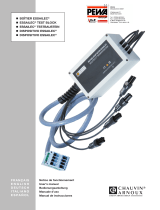 Chauvin-Arnoux ESSAILEC CA84 Serie Le manuel du propriétaire
Chauvin-Arnoux ESSAILEC CA84 Serie Le manuel du propriétaire
-
CHAUVIN ARNOUX B102 Manuel utilisateur
-
CHAUVIN ARNOUX F09 Manuel utilisateur
-
CHAUVIN ARNOUX F09 Manuel utilisateur
-
CHAUVIN ARNOUX 1045 Manuel utilisateur
-
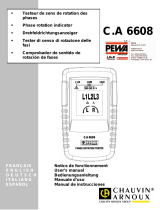 Chauvin-Arnoux C.A 6608 Manuel utilisateur
Chauvin-Arnoux C.A 6608 Manuel utilisateur
-
CHAUVIN ARNOUX CA 8345 Guide de démarrage rapide
-
CHAUVIN ARNOUX F09 Manuel utilisateur
-
CHAUVIN ARNOUX AEMC 6501 Manuel utilisateur
Autres documents
-
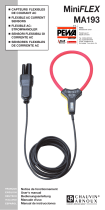 Chauvin-Arnoux CAMA193K35 Le manuel du propriétaire
Chauvin-Arnoux CAMA193K35 Le manuel du propriétaire
-
AEMC 2137.77 Manuel utilisateur
-
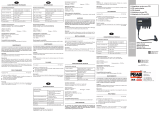 Chauvin-Arnoux CA102134 Le manuel du propriétaire
Chauvin-Arnoux CA102134 Le manuel du propriétaire
-
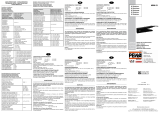 Chauvin-Arnoux CAMZ01 Le manuel du propriétaire
Chauvin-Arnoux CAMZ01 Le manuel du propriétaire
-
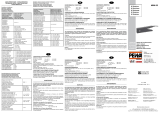 Chauvin-Arnoux CAMZ02 Le manuel du propriétaire
Chauvin-Arnoux CAMZ02 Le manuel du propriétaire
-
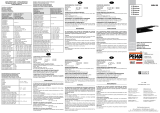 Chauvin-Arnoux CAMZ05 Le manuel du propriétaire
Chauvin-Arnoux CAMZ05 Le manuel du propriétaire
-
AEMC PA32ER Adapter Manuel utilisateur
-
AEMC 6474 Kit Manuel utilisateur
-
Metrix MX 350 Manuel utilisateur
-
Amprobe ACD-50 Series Manuel utilisateur


















































